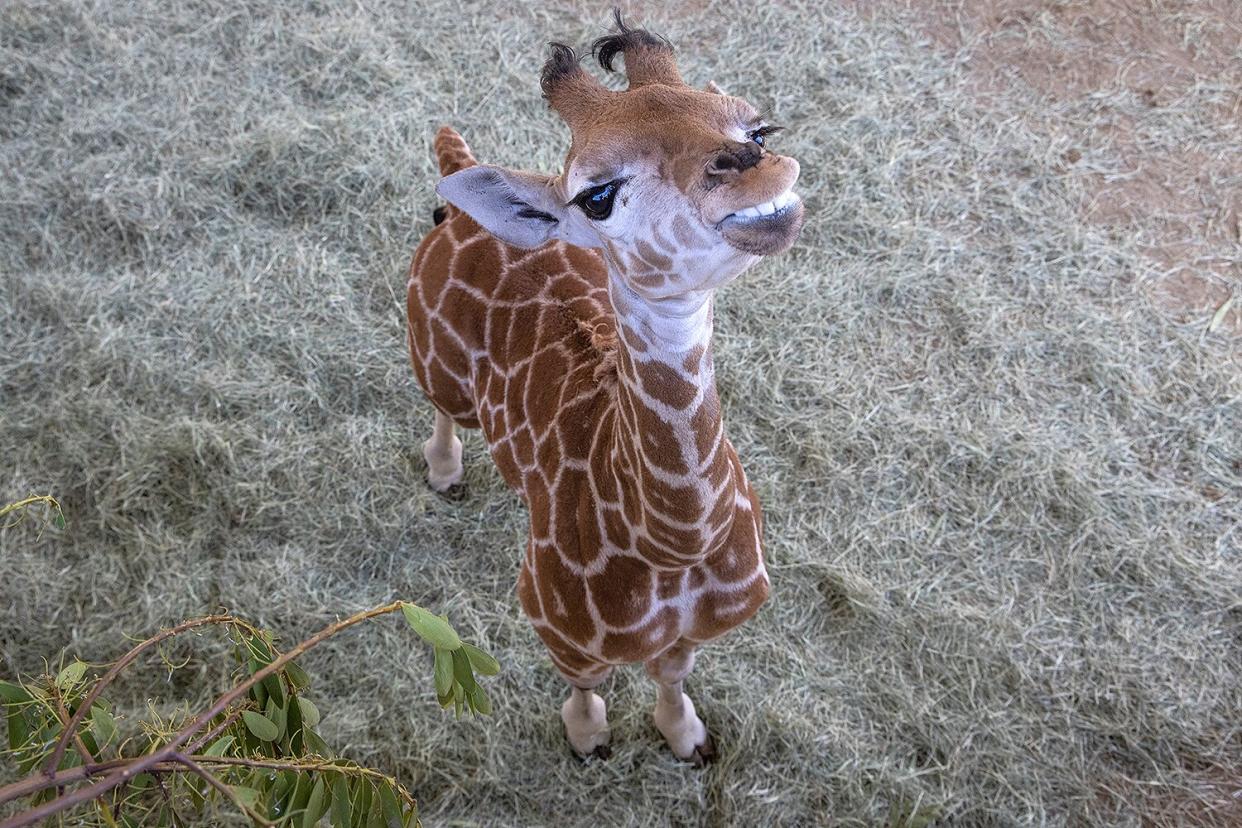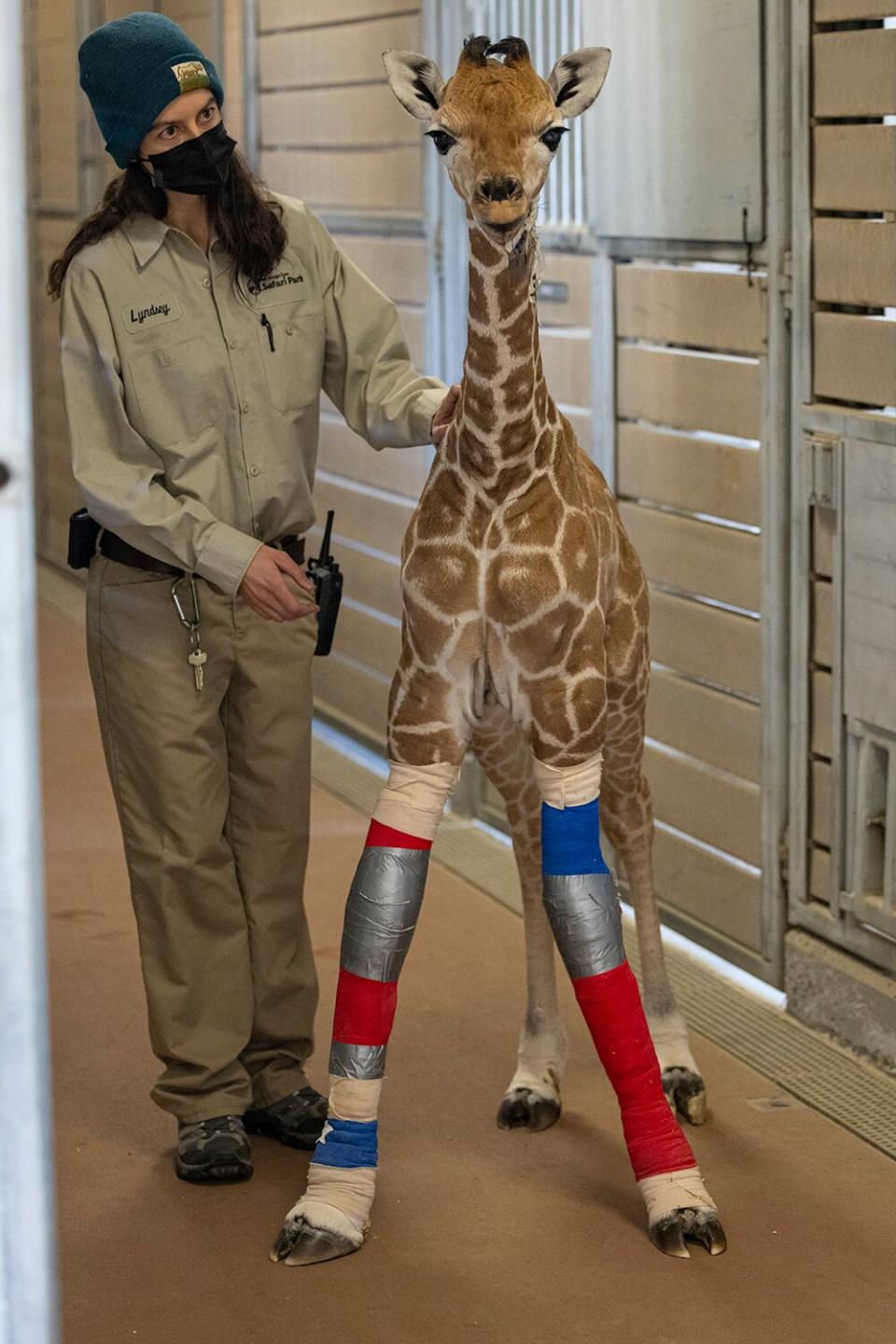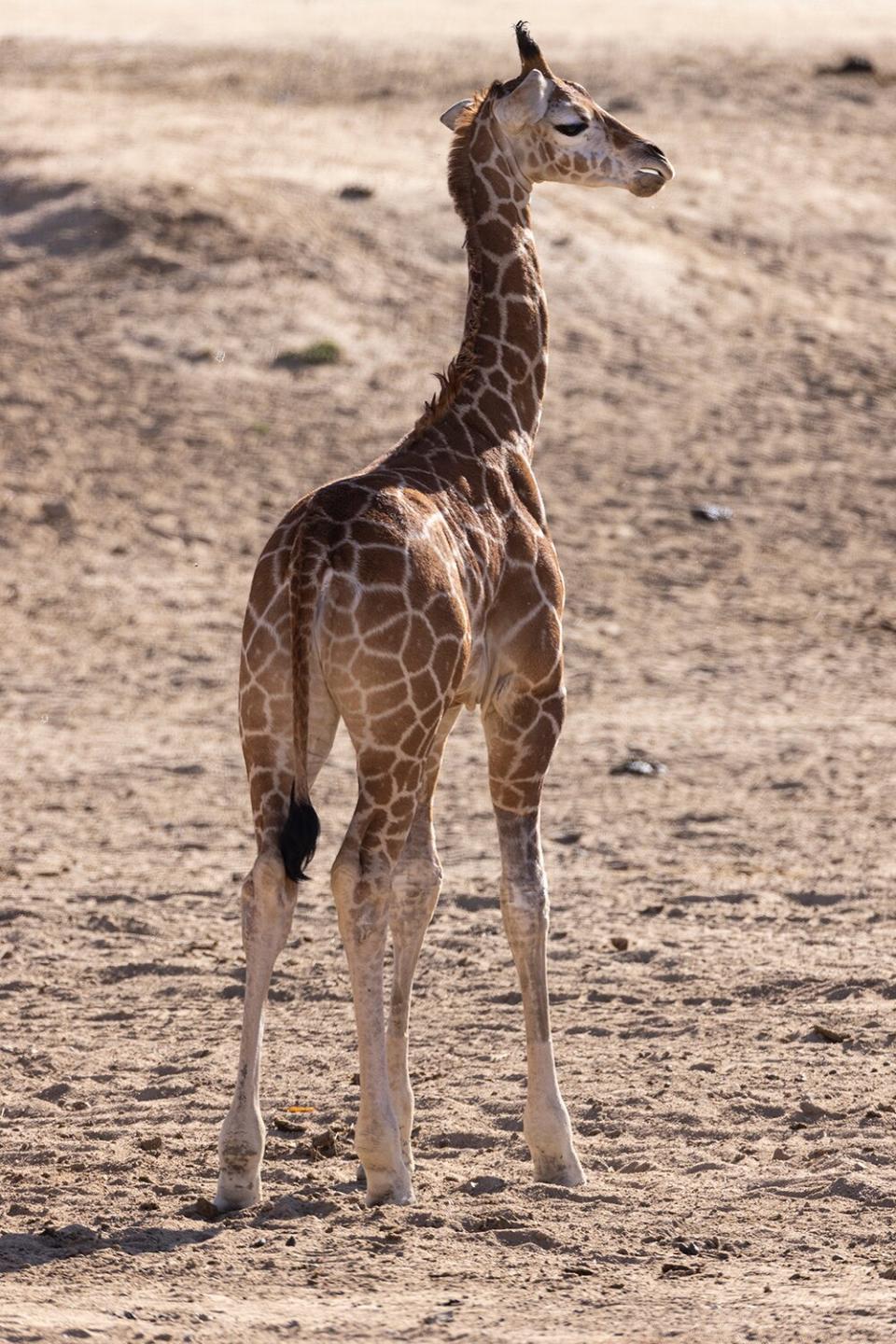Giraffe Calf Walking with Confidence After Leg Brace Treatment at the San Diego Zoo Safari Park

- Oops!Something went wrong.Please try again later.
Ken Bohn/San Diego Zoo
A three-month-old giraffe calf from the San Diego Zoo Safari Park has been given a second chance!
The female calf — named Msituni (pronounced see tune neee), which means "in the forest" in Swahili — was born at the San Diego Zoo Safari Park with hyperextension of the carpi — bones equivalent to those in the human wrist.
Msituni's condition caused her front legs to bend improperly and made it difficult for her to stand and walk. After noticing the abnormalities, the wildlife health and care team at the California park started coming up with a treatment plan to help with the calf's mobility.
San Diego Zoo Safari Park believed the calf would benefit from custom leg braces, so the safari park reached out to the Hanger Clinic, a nationwide provider of outcomes-based orthotic and prosthetic care. Though the clinic only focuses on care for humans, members of the San Diego-based Hanger Clinic team consulted with the zoo to develop a customized plan for Msituni.
"We are so glad to have the resources and expertise to step in and provide this young calf the opportunity for a full life," Matt Kinney, DVM, a senior veterinarian with the San Diego Zoo Wildlife Alliance (SDZWA), said in a statement. "Without these lifesaving braces to provide support, the position of her legs would have become increasingly more painful and progressed to a point she would not have been able to overcome."
RELATED: Birmingham Zoo's Oliver the Orangutan on the Mend Following Surgery to Remove Tumor

Ken Bohn/San Diego Zoo
"Following initial device fittings, the team quickly fabricated the custom-molded carbon graphite orthotic braces by using cast moldings of the calf's legs and fit Msituni with her new devices," the SDZWA shared in a release about the calf's progress.
"I feel a tremendous sense of accomplishment," Ara Mirzaian, a certified orthotist at Hanger Clinic, added in the release. "I've never worked with wildlife before — it's one of those things that is a once-in-a-lifetime opportunity, and you just have to savor the moment."
RELATED: Oregon Zoo Names Its Baby Orangutan After One of Dolly Parton's Most Famous Songs
Unfortunately, Msituni's legs weren't her only health worries. The baby giraffe also had several serious ailments following her birth and had to take intravenous antibiotics for abnormalities in her blood. The calf's caretakers also gave Msituni specialized hoof extenders to fix the irregular position of her back legs.
All of the calf's treatments led to success. Msituni is no longer receiving antibiotics, the braces have been removed, and her legs are now correctly positioned. The calf can stand and walk more comfortably now and is building up strength.

Ken Bohn/San Diego Zoo
Msituni has done so well that her wildlife care team recently introduced her to the rest of the giraffe herd in the safari park's East Africa savanna habitat.
RELATED: Detroit Zoo Reveals 5-Month-Old Baby Wallaby Is Missing: 'We Are Heartbroken'
"This was an important step in Msituni's natural development," Kristi Burtis, the director of wildlife care at the San Diego Zoo Safari Park, said. "As her bond grows with the herd, she will be able to learn behaviors and skills important to the development of a young giraffe."
Science teams have estimated that fewer than 100,000 giraffes are left in the animal's native habitats — a decrease of more than 40 percent over the last 20 years. It is believed that the downward trend is due to habitat loss, habitat fragmentation, and poaching in certain regions.
"The birth of every animal is a cherished event, and Msituni's survival in the face of so much adversity makes it all the more remarkable," Kinney added.

